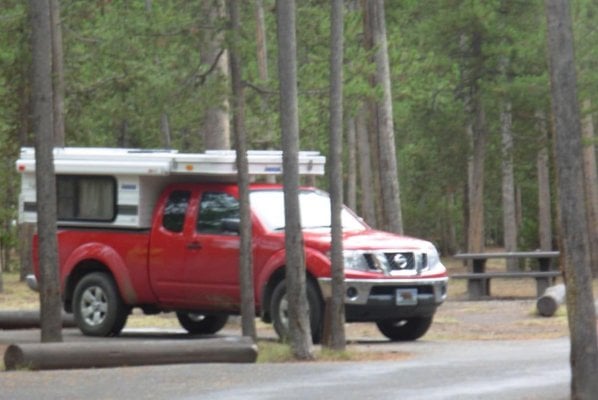Finally I'm on to installing an older eagle (with tail lights) onto a 2013 Nissan Frontier... It's been a bit of work on camper and truck to get it to this point.
The dealer says no plastic bedliners. The factory says not advised, but they sometimes have done installs on top of bedliners. Obviously you need a hole in the bedliner so that the upper fender washer and the shoulder of the eyebolt are all on the metal of the truck bed... Used a rubber mat to increase friction between camper and bedliner?
Anyone done one of these - any thoughts on whether they'd do it again. I'd *like* to keep the bedliner in place for use when the camper isn't mounted.
Second question is clearance between the pickup rails and the camper rails. It looks like if I do a straight install, I'll have about an inch of clearance. However, there are a couple of protruding bolts from the bottom of the camper rails on each side that look to come in contact. Why? Did those have blocks threaded on them for pickup stake pockets? Should I cut them off flush, or nearly flush? Or, are they important to keep as-is (?), and therefore I would add another inch or more of blocking to the bottom of the camper?
Any comments on my driver's side front anchor - on the camper it is oriented so the bed eyebolt will apparently need to be on the wheel well.
All help & comments much appreciated!
The dealer says no plastic bedliners. The factory says not advised, but they sometimes have done installs on top of bedliners. Obviously you need a hole in the bedliner so that the upper fender washer and the shoulder of the eyebolt are all on the metal of the truck bed... Used a rubber mat to increase friction between camper and bedliner?
Anyone done one of these - any thoughts on whether they'd do it again. I'd *like* to keep the bedliner in place for use when the camper isn't mounted.
Second question is clearance between the pickup rails and the camper rails. It looks like if I do a straight install, I'll have about an inch of clearance. However, there are a couple of protruding bolts from the bottom of the camper rails on each side that look to come in contact. Why? Did those have blocks threaded on them for pickup stake pockets? Should I cut them off flush, or nearly flush? Or, are they important to keep as-is (?), and therefore I would add another inch or more of blocking to the bottom of the camper?
Any comments on my driver's side front anchor - on the camper it is oriented so the bed eyebolt will apparently need to be on the wheel well.
All help & comments much appreciated!


